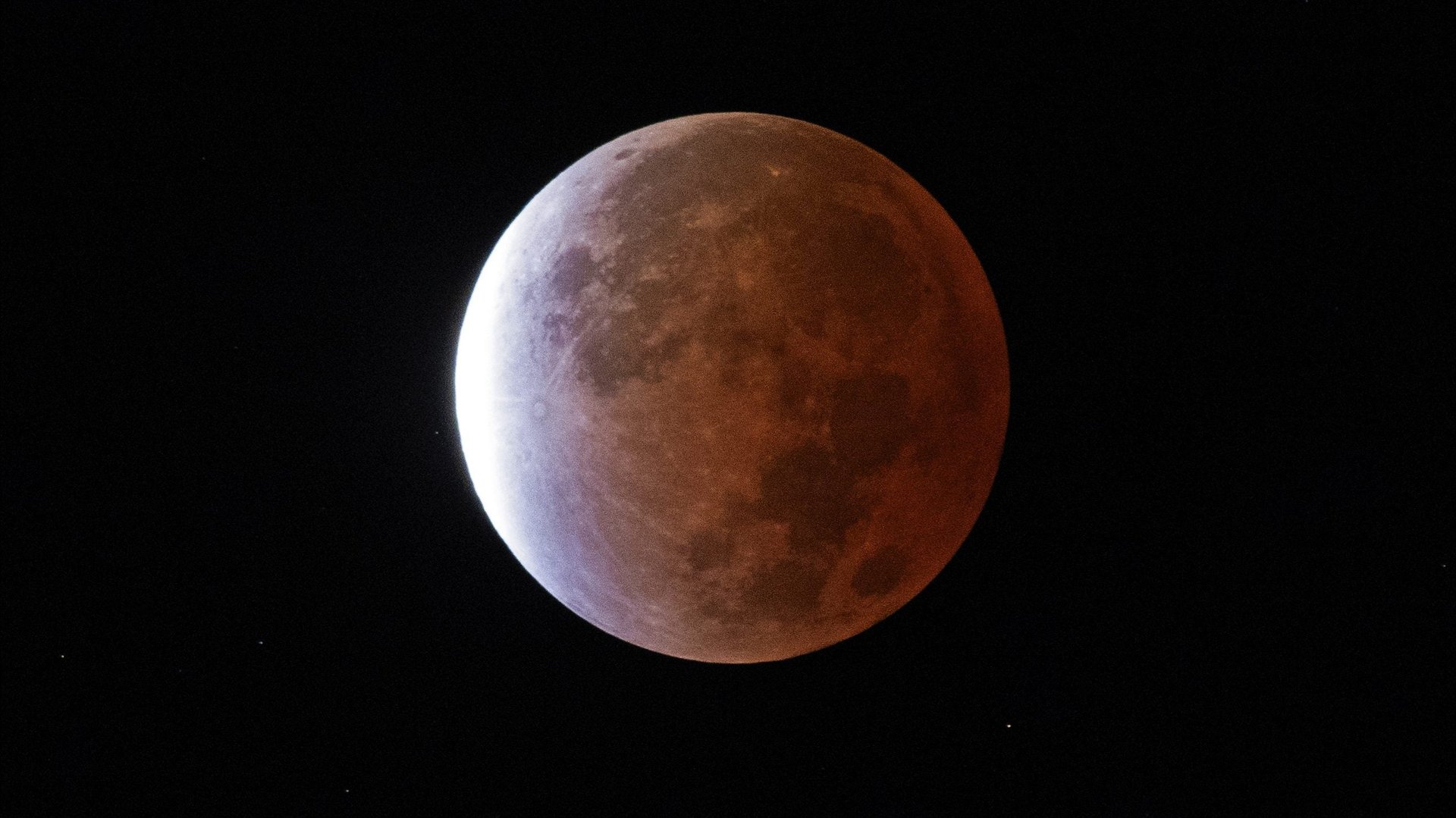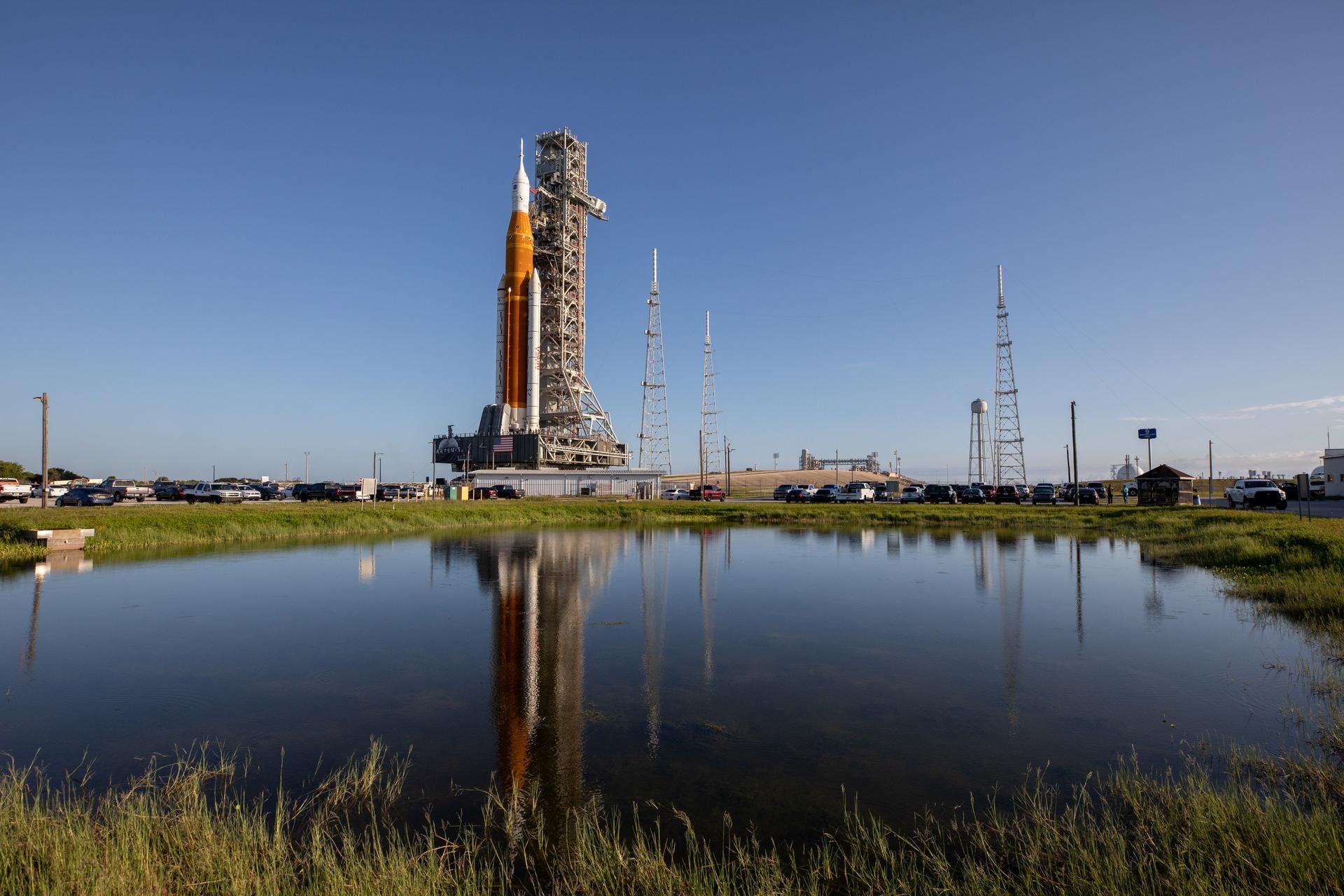NASA’s Capstone mission paves the way for lunar infrastructure
Dear readers,


Dear readers,
Welcome to Quartz’s newsletter on the economic possibilities of the extraterrestrial sphere. Please forward widely, and let me know what you think. This week: Building a new orbit, scrubbing a SpaceX mission, and French space diplomacy.
🚀 🚀 🚀
It’s not every day that a new orbit gets broken in, but an ambitious Moon mission called Capstone, expected to launch June 13, will do just that in order to prepare the infrastructure necessary for a sustainable presence there.
Orbits are the paths that objects in space take around large centers of mass, with the Moon orbiting the Earth or the planets in the solar system orbiting the sun. These are relatively simple paths that were predicted by astronomers centuries ago. When people started launching objects into space, they learned how to put satellites and spacecraft in similar orbits around the Earth, and the Moon.
There are more complex orbits, however, where a spacecraft travels under the gravitational influence of two different astronomical bodies. You might know the concept of “three body problems” from the popular science fiction novel about first contact with alien life. This is almost as exciting: The Capstone team will put a spacecraft in orbit between the Earth and the Moon, called a near rectilinear halo orbit, or NRHO. There, “you’re kind of riding the balance point between the gravitational pull of the Earth and the gravitational pull of the Moon,” as NASA executive Chris Baker puts it.
This orbit has some special features: The spacecraft following it will always be in view of the Earth, allowing for constant communications. The orbit is asymmetrical, so at its lowest point it comes very close to the lunar surface, allowing for easy access to the Moon, and at its highest it is quite far away, for easier access to Earth. NASA’s plan for its Artemis Moon missions is to put a spacecraft in this orbit, called the Lunar Gateway, that will serve as a port-of-call for visiting astronauts.
First, the microwave-sized Capstone spacecraft will demonstrate that vehicles can travel on this path without having to use a lot of propellant to stay in place. That requires some sophisticated modeling by Advanced Space, the private company that designed and will operate this mission for NASA. Only two other missions, one from NASA and one from China’s space agency, have used Earth-Moon orbits, and no one has flown the NRHO before.
Part of Capstone’s demonstration (and name) is the cislunar autonomous positioning system, or CAPS. This technology is designed to allow a spacecraft to determine its own position when operating in between the Earth and the Moon, instead of relying on Earth-based trackers. That, in turn, will allow the spacecraft to keep itself in its orbit.
Advanced Space was founded to pursue the sustainable development and settlement of space, but their contribution is solving the complex mission design questions needed to achieve those goals. The company consults for NASA, satellite operators and foreign space agencies, but Capstone is its biggest project to date.
The company’s CEO, Bradley Cheetham, says one reason no one has tried this before, besides the complexity, is that this kind of mission design only makes sense if you are planning for long-term infrastructure like the Gateway. The Apollo missions focused on the fastest path to the Moon and back, and so they didn’t consider orbits like this one. A focus on long-term tools for guidance, communications, transportation, and ultimately habitation is what sets the 21st century Moon program apart from its 20th century predecessor.
Another difference is the way private industry is being employed. This mission was developed by Advance Space, the spacecraft was built by Tyvak, and it will be launched on a Rocket Lab rocket, which will be sending its first payload beyond Earth orbit. The total cost to NASA is about $30 million, which is startlingly cheap for a lunar spacecraft, even one as relatively small and simple as this one.
Cheetham says his business will only grow as the menu of options available for rockets, spacecraft, and other technologies continues to expand, creating opportunities for mission designers to solve problems with creative new orbits.
🌘 🌘 🌘
Imagery interlude
The Boeing Space Launch System rocket is back on the pad for another rehearsal of its fueling procedures. This “wet dress rehearsal” was attempted earlier this year but canceled due to various issues with propellant loading. This week, the rocket rolled back out to the launch site for another bite at the apple.

The success of the demonstrations will in part determine whether the first uncrewed Artemis mission takes place this year or in 2023.
🎧🎧🎧
Are we in a podcast bubble? Depends on who you ask! Podcasting’s low barrier to entry, plus widespread interest in the format, means there’s plenty of attention on pod opportunities. But all that interest is also making it increasingly difficult to break through, let alone build a big audience. Who wins and who loses when everything shakes out? Learn more with this week’s episode of the Quartz Obsession podcast.
Listen on: Apple Podcasts | Spotify | Google | Stitcher
🛰🛰🛰
SPACE DEBRIS
SpaceX scrubs cargo mission due to fuel leak. Now, NASA and SpaceX engineers will have to figure out what’s going on with the Dragon’s propulsion system before it sends the next load of experiments—or crew of astronauts.
EY plans $1 billion satellite imagery business. The international consulting firm says it will develop image analysis software that would help clients monitor assets like pipelines and spot wildfires in advance.
France signs the Artemis Accords. The nation’s role as a key player in the European Space Agency makes it among the most important to join the US-backed framework for exploration and activity on the Moon, which has been criticized by Russia and China.
Musk says no Starlink IPO soon. At an all-hands meeting with SpaceX staff, founder Elon Musk said the company was unlikely to spin out its satellite internet network for two or three years. SpaceX executives have discussed taking the business public as its own firm once it becomes cashflow positive.
A micrometeroid hit the James Webb Space Telescope. It should be ok.
This is why SAR is so important. A good round-up of the growing role of synthetic aperture radar in space by Sarah Scoles, a friend of this newsletter.
A NASA Mars mission almost went wrong. Earlier this year, NASA’s MAVEN Mars orbiter almost lost control, until engineers came up with a new way for it to figure out where it is.
your pal,
Tim
This was issue 136 of our newsletter. Hope your week is out of this world! Please send your favorite complex orbits, billion dollar space imagery business plans, tips, and informed opinions to [email protected].